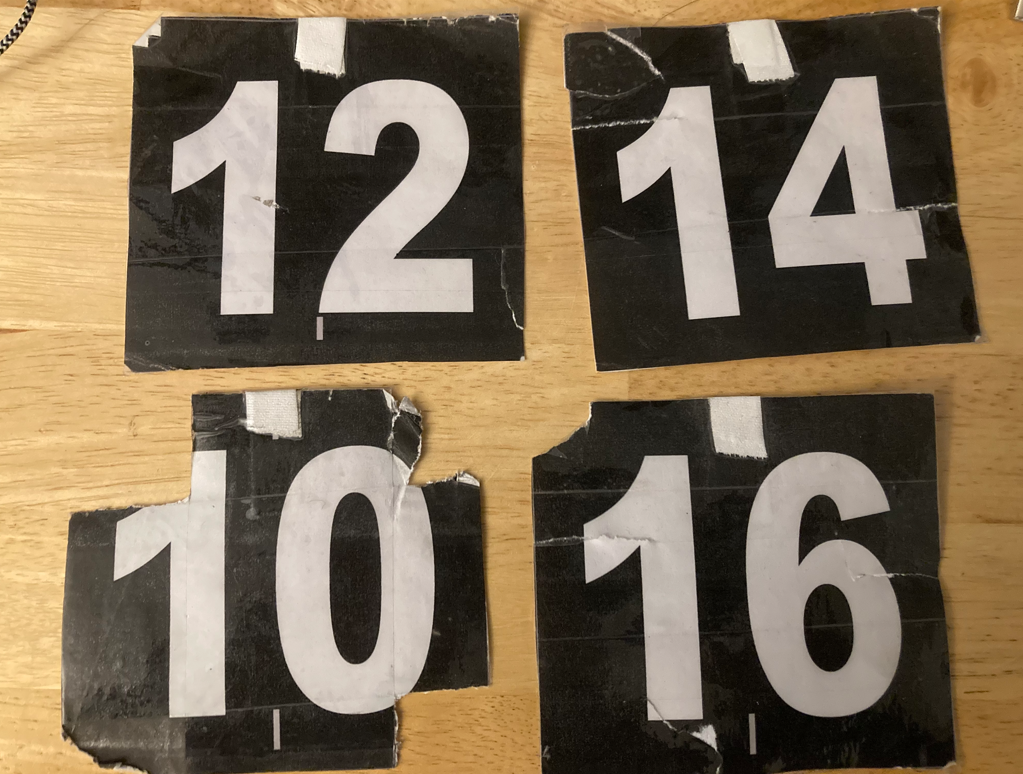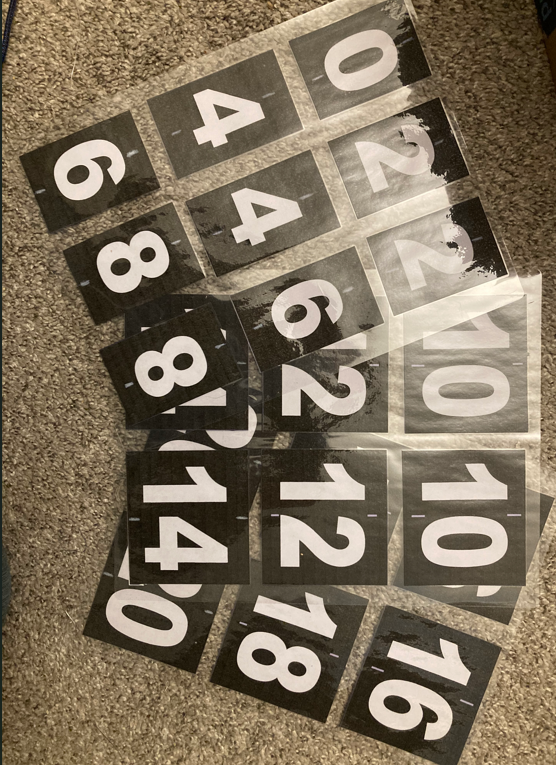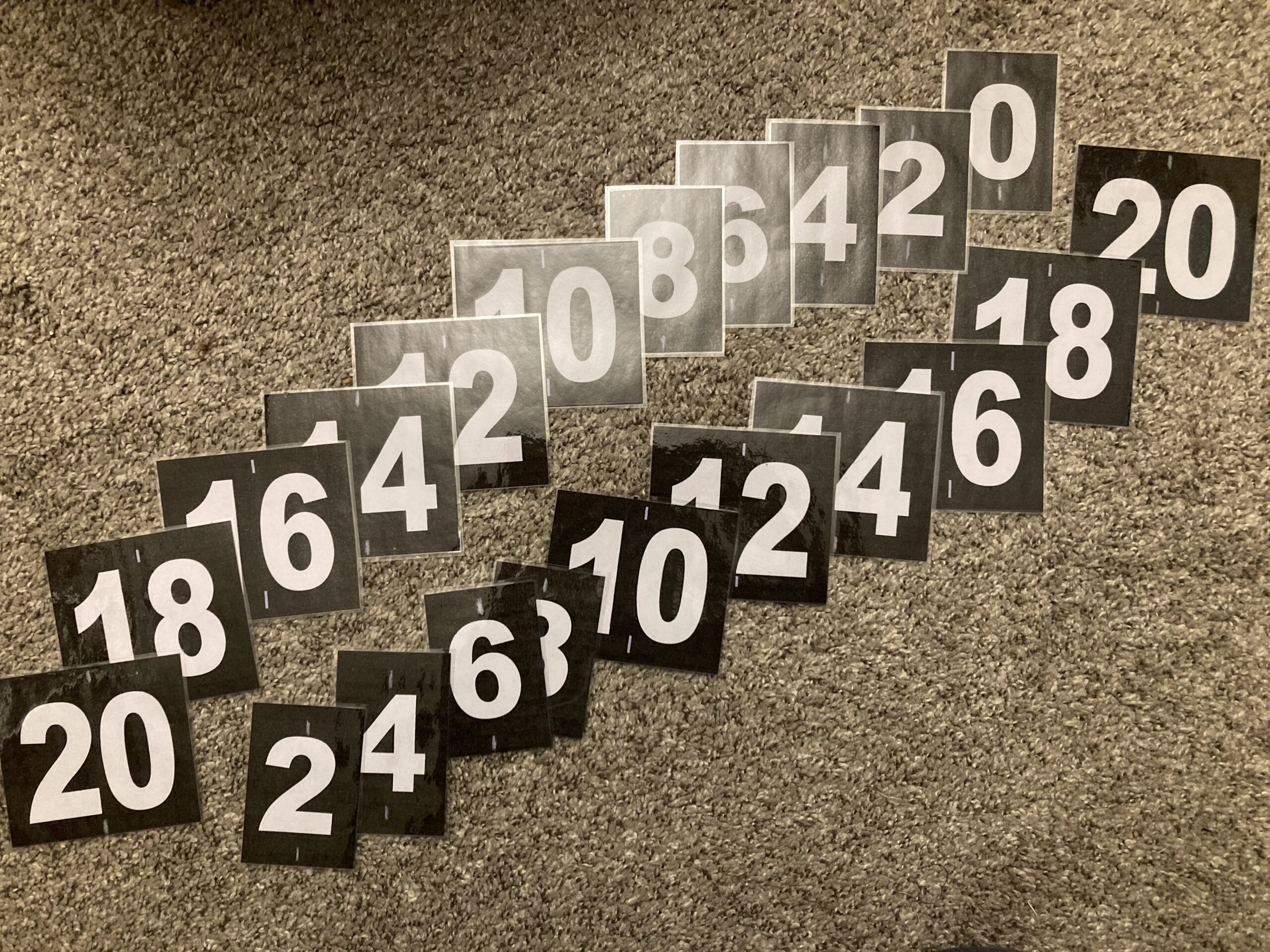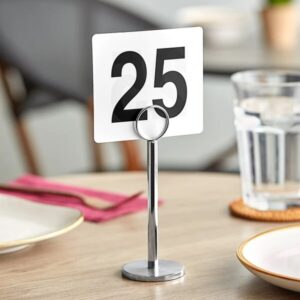In a past blog post I’ve talked about creating your own quick and dirty dance number line. I carry mine on every gig as even rolled up I can still enclose it in one fist. That post also included a link to Headset Chatter’s fantastic free download of dance numbers, as well as the portable number line available for purchase from Ben Liebert.
My favorite dance number product was used when I toured with the Rockettes – and also was the most precise I ever had to be with setting down dance lines. We would buy adhesive mailbox numbers – and there was only one brand we would buy locally. It had the width of the 1 and the 0 the same, so that on a “10” so it was obvious the true center. Frankly, these are still my favorite most exacting way to put down dance numbers…but it’s also a waste as you rarely use the odd numbers…except that you have to buy enough packs to have all the “ones” you need for 12 through 18 (see below). And reusable, they are not, even if you put clear tape over them.
QUICK MATH if going to 20 versus 30 each side of the stage (40 or 60 foot stage width), you need the following of each individual number sticker:
- Zero – 5 vs 7 (for 0, two 10s, two 20s…and then two 30s)
- One – 10 vs 10
- Two – 6 vs 16 (that adds up fast!)
- Three – 0 vs 2 if you go out to 30
- Four, Six, and Eight – 4 vs 6
- You don’t need any of Five, Seven, and Nine, though sometimes nines can be used as sixes.
For the past few years I’ve been using dance numbers I printed from Headset Chatter (link above) for the rehearsal hall. This set had been through multiple rehearsals and was on its last legs, so this weekend I did a Stage Manager Arts & Crafts project.

I’ve been thinking of laminating myself a set for a while to be reusable. I had this idea I was going to make them double-sided with reverse colors on the back. Mid-project I realized that the white background versions from this website didn’t have as defined of edges for the cut marks, plus they were somewhat going to bleed through each other back to back. To save frustration, I only made a black set. Note, if you are as finicky as me, trim the line that has 4-4-6 a little shorter to match the height of other numbers. And try not to pay attention to the font size difference of the single digit numbers versus those in double digits…at least I hadn’t noticed them for months, as they were two feet apart. The black set still has my favorite feature – hashmarks marking center of the number in addition to the gridlines to cut. A few center hashmarks were faint or non-existent so I used a white grease pencil to make them show up better. After cutting apart the numbers, I put them between sheets of laminate. (You could just laminate the whole sheet and save cutting everything twice, but I wanted a little plastic edge to them all and the sealed factor.)

And here’s what they looked like when all finished:

If you prefer the look of black numbers on a white background, Headset Chatter also has those available, but check out what a teacher mentioned on Facebook that he had purchased – something I had never thought to use before – the numbers used for tables at restaurants and event seating!

If you go this route, I recommend finding a restaurant supply place as they are a lot cheaper there than on Amazon. Most people would not use the odd numbers (and you’re going to have to be creative on what you use for zero itself), but a quick Google search found a set of 1 through 25 for currently just $1.99 at WebRestaurantStore.com. (I have no affiliation, just found it online). I bet a local store to you would cut out any shipping costs too. You might be able to get a full set 25 to 25 each side of the stage for $4.00 and not need the cost of your own labor (maybe $14 with shipping?).
The next blog post discusses how to lay dance numbers on a curve, as well as a way to help out your choreographer.